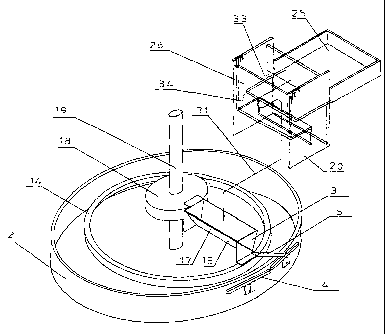Some of the information on this Web page has been provided by external sources. The Government of Canada is not responsible for the accuracy, reliability or currency of the information supplied by external sources. Users wishing to rely upon this information should consult directly with the source of the information. Content provided by external sources is not subject to official languages, privacy and accessibility requirements.
Any discrepancies in the text and image of the Claims and Abstract are due to differing posting times. Text of the Claims and Abstract are posted:
| (12) Patent: | (11) CA 2474046 |
|---|---|
| (54) English Title: | APPARATUS FOR GRADING LIVE FISH AND THE LIKE |
| (54) French Title: | DISPOSITIF DE TRIAGE DE POISSONS VIVANTS ET ANALOGUES |
| Status: | Expired and beyond the Period of Reversal |
| (51) International Patent Classification (IPC): |
|
|---|---|
| (72) Inventors : |
|
| (73) Owners : |
|
| (71) Applicants : |
|
| (74) Agent: | SMART & BIGGAR LP |
| (74) Associate agent: | |
| (45) Issued: | 2011-03-08 |
| (86) PCT Filing Date: | 2003-01-03 |
| (87) Open to Public Inspection: | 2003-07-24 |
| Examination requested: | 2007-11-28 |
| Availability of licence: | N/A |
| Dedicated to the Public: | N/A |
| (25) Language of filing: | English |
| Patent Cooperation Treaty (PCT): | Yes |
|---|---|
| (86) PCT Filing Number: | PCT/IS2003/000001 |
| (87) International Publication Number: | WO 2003059052 |
| (85) National Entry: | 2004-07-30 |
| (30) Application Priority Data: | ||||||
|---|---|---|---|---|---|---|
|
The present invention relates to an apparatus for grading live fish and the
like. It comprises an in-feed device capable of feeding a maximum number of
fish into a grading box which revolves. As it revolves, a slot opens in the
bottom. The slot grows progressively broader during the revolution, or half
revolution if there are two in-feed positions. Successively bigger fish will
pass the slot into bins for different size fish.
La présente invention un dispositif de triage de poissons vivants et analogues. Ce dispositif comprend un dispositif d'entrée permettant de faire entrer un nombre maximal de poissons dans un compartiment de classement rotatif. Lors d'une rotation, une ouverture se forme dans le plancher. Cette ouverture s'accroît progressivement au cours de la rotation (ou de la demi-rotation s'il y a deux positions d'entrée). Ainsi, des poissons de plus en plus gros traversent l'ouverture et tombent dans des bacs destinés aux poissons de différentes tailles.
Note: Claims are shown in the official language in which they were submitted.
Note: Descriptions are shown in the official language in which they were submitted.

2024-08-01:As part of the Next Generation Patents (NGP) transition, the Canadian Patents Database (CPD) now contains a more detailed Event History, which replicates the Event Log of our new back-office solution.
Please note that "Inactive:" events refers to events no longer in use in our new back-office solution.
For a clearer understanding of the status of the application/patent presented on this page, the site Disclaimer , as well as the definitions for Patent , Event History , Maintenance Fee and Payment History should be consulted.
| Description | Date |
|---|---|
| Time Limit for Reversal Expired | 2022-07-05 |
| Letter Sent | 2022-01-04 |
| Letter Sent | 2021-07-05 |
| Letter Sent | 2021-01-04 |
| Inactive: IPC deactivated | 2020-02-15 |
| Common Representative Appointed | 2019-10-30 |
| Common Representative Appointed | 2019-10-30 |
| Inactive: First IPC assigned | 2019-02-08 |
| Inactive: IPC assigned | 2019-02-08 |
| Inactive: IPC assigned | 2019-02-08 |
| Inactive: IPC expired | 2017-01-01 |
| Grant by Issuance | 2011-03-08 |
| Inactive: Cover page published | 2011-03-07 |
| Pre-grant | 2010-12-16 |
| Inactive: Final fee received | 2010-12-16 |
| Notice of Allowance is Issued | 2010-07-05 |
| Notice of Allowance is Issued | 2010-07-05 |
| Letter Sent | 2010-07-05 |
| Inactive: Approved for allowance (AFA) | 2010-06-30 |
| Amendment Received - Voluntary Amendment | 2010-01-27 |
| Inactive: S.30(2) Rules - Examiner requisition | 2009-07-28 |
| Letter Sent | 2008-01-24 |
| Request for Examination Received | 2007-11-28 |
| Request for Examination Requirements Determined Compliant | 2007-11-28 |
| All Requirements for Examination Determined Compliant | 2007-11-28 |
| Inactive: IPC from MCD | 2006-03-12 |
| Inactive: IPC from MCD | 2006-03-12 |
| Inactive: Cover page published | 2004-10-18 |
| Inactive: Inventor deleted | 2004-10-07 |
| Inactive: Notice - National entry - No RFE | 2004-10-07 |
| Application Received - PCT | 2004-08-23 |
| National Entry Requirements Determined Compliant | 2004-07-30 |
| Application Published (Open to Public Inspection) | 2003-07-24 |
There is no abandonment history.
The last payment was received on 2010-12-03
Note : If the full payment has not been received on or before the date indicated, a further fee may be required which may be one of the following
Please refer to the CIPO Patent Fees web page to see all current fee amounts.
Note: Records showing the ownership history in alphabetical order.
| Current Owners on Record |
|---|
| STEINAR STEINSSON |
| Past Owners on Record |
|---|
| None |